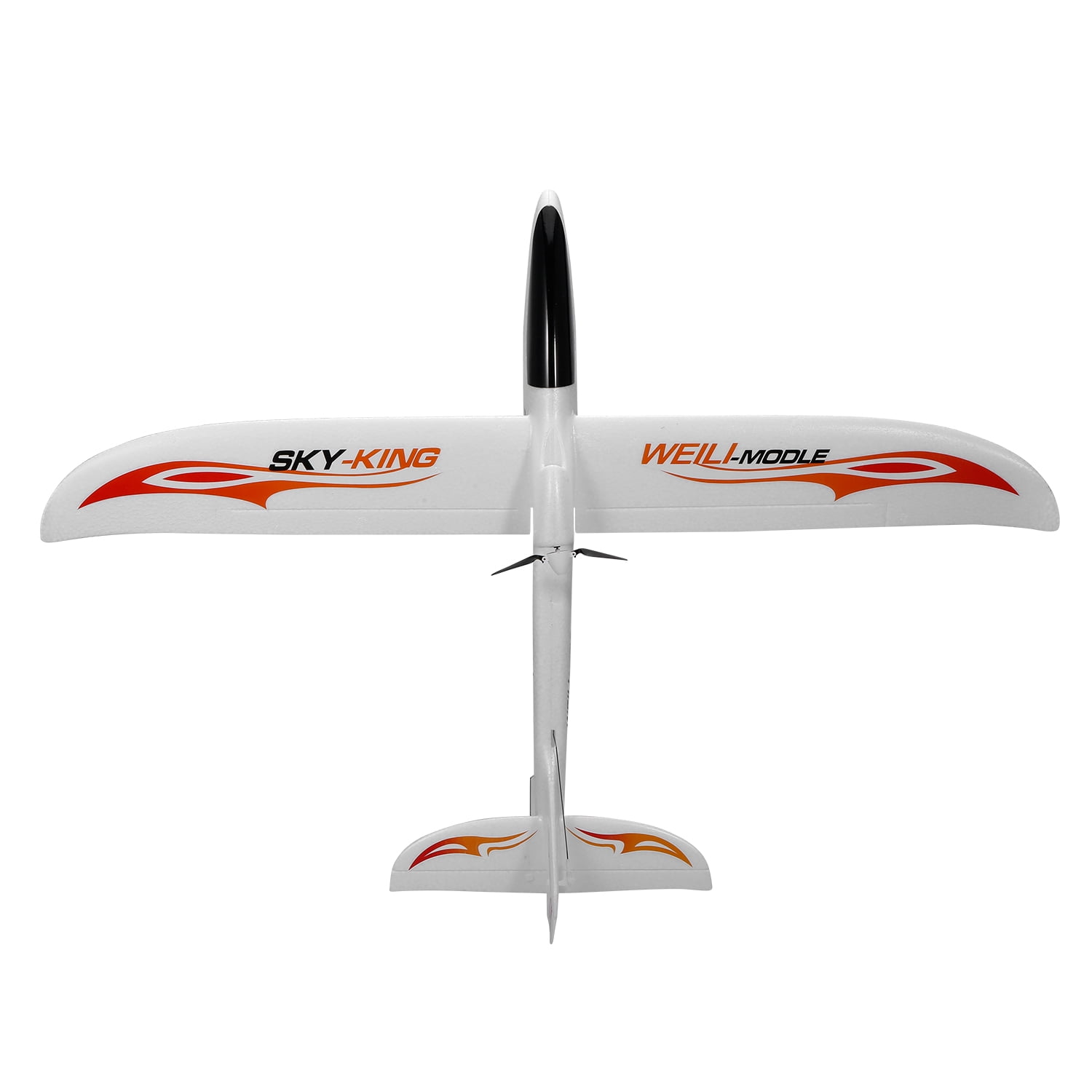

Mode 1: One of the reasons some pilots might prefer Mode 1 is that it puts the elevator and aileron controls on opposite sticks. Some RC controllers can be set for either mode. Some pilots prefer one over the other depending on how they were originally trained. However, that is not a hard and fast rule. Mode 1 and Mode 2 are the most widely used. There are 4 modes of operation for RC airplane controllers. However, the basic 4 channels needed are controlled by two sticks that move up/down and left/right. 5 channel, 6 channel and more add additional buttons, switches, knobs, or sliders to control even more functions. Hobby-grade RC airplanes often have at least 4 channel controllers. The differing amounts of power act like a rudder. For craft without elevator control, equal amounts of increasing power cause the craft to speed up (propeller spins faster) and go up, less power slows it down. This method of turning is often used in small RC aircraft without elevator or rudder control. It may be found with rear-facing or forward-facing twin props. Less power to the right motor sends the aircraft to the right.ĭifferential thrust is more or less the same thing (and probably a more accurate term for most RC aircraft)-applying differing amounts of power so that you get differing amounts of thrust from each motor. Applying less power to the left motor causes the aircraft to turn to the left. Other names you might read: twin motor thrust vectoring, differential throttle, differential motor control, and/or differential steering.Īlthough the definition for thrust vectoring for real aircraft is a bit more complicated, for RC aircraft the term thrust vectoring is generally used to describe a method of changing the direction of the aircraft by applying more or less power to a pair of (usually) wing-mounted motors. You will find differential thrust in some RC airplanes that have no ailerons, elevators, elevons, or rudders. While the increased maneuverability and response to controls in low wing and mid-wing models may sound good, they can be harder to control for inexperienced RC pilots.Īs used to describe how RC airplanes maneuver, differential thrust or thrust vectoring are essentially the same thing. The two wings may be directly above/below each other or they may be offset or staggered with one a little further back than the other. The wings are connected to each other with various configurations of struts and wires. The plane has two wings, usually one over and one under the fuselage. Jets and sports planes often have this wing placement. Mid-wing: The wings are on either side of the fuselage. You'll find this configuration on a lot of planes designed for aerobatics. Low wing: The wing is attached below the fuselage. It may be attached or supported with wires or struts of some kind. High wing: The wing is above the fuselage. There are four general wing positions for RC airplanes. RC airplanes with certain wing placements are easier for novice pilots to control. Wing placement makes a difference in how an RC airplane handles. RC airplanes may have one, two, or more propellers. The propeller is usually affixed to the motor and may be mounted on the nose, tail, or the wings. Propeller: Most RC airplanes have some form of propeller. Tail: At the back end of the fuselage, the tail comes in many forms including conventional or T-tail, V-tail, or flat. Wings may be straight, curved, flat, rounded, ellipitical, triangular (such as Delta wing style, the plane on the right in the illustration), or other shapes. Attached to the fuselage, the wings don't usually flap or turn.  Wing: Airplanes are called fixed wing aircraft. Some RC airplanes have little more than a long stick or rod for a fuselage. The RC electronics (motors, servos, batteries, wiring) are often housed inside the fuselage. In a real airplane this is where the pilot, passengers, and cargo would be found. Fuselage: The main body of the airplane. This part of the airplane is susceptible to damage in diving crashes. Some RC airplanes have a propeller on the nose. Nose: Part of the fuselage, the nose is the front of the airplane forward of the wings. There is much more detail involved as you dig deeper (or fly higher) into the world of RC airplanes. The parts described here paint the big picture.
Wing: Airplanes are called fixed wing aircraft. Some RC airplanes have little more than a long stick or rod for a fuselage. The RC electronics (motors, servos, batteries, wiring) are often housed inside the fuselage. In a real airplane this is where the pilot, passengers, and cargo would be found. Fuselage: The main body of the airplane. This part of the airplane is susceptible to damage in diving crashes. Some RC airplanes have a propeller on the nose. Nose: Part of the fuselage, the nose is the front of the airplane forward of the wings. There is much more detail involved as you dig deeper (or fly higher) into the world of RC airplanes. The parts described here paint the big picture. #DIFFERENTIATION RC WING HOW TO#
Understanding these basics can help you in making a good choice when purchasing your first RC airplane and in learning how to fly them. However, there are basic parts found in most any style plane.

There is a great deal of variety in the shape and configuration of RC airplanes.







 0 kommentar(er)
0 kommentar(er)
